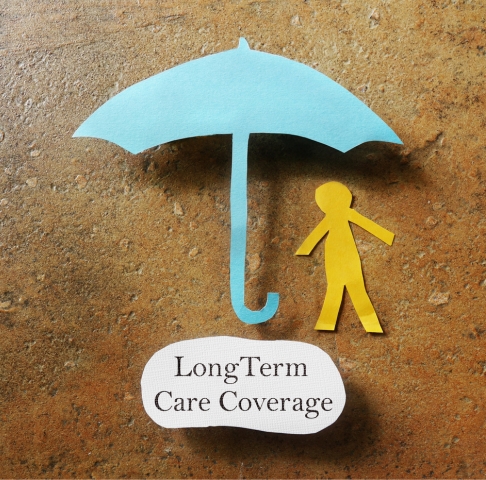When the Ministry of Health unveiled CareShield Life in mid-2018, the new national long-term care insurance set to replace ElderShield from 2020 got the attention of young and old alike. Why?
- It’ll be mandatory for anyone born in 1980 or later (ElderShield is an opt-out scheme)
- Premiums start from age 30 (10 years earlier than with ElderShield)
- It gives higher monthly payouts (starting at S$600 a month, compared to S$300-400 a month with ElderShield)
- It gives up to a lifetime of payouts, as long as you remain severely disabled (compared to up to 72 months now with ElderShield)
- Its payouts will increase over time until a claim is made (ElderShield payouts are fixed)
- Its premiums increase with age (ElderShield premiums stay constant)
Months after CareShield Life was announced, people are still talking about the overhaul. One critical question that’s being asked: “Just how does CareShield Life fit into my current long-term care master plan?”
To answer that, let’s examine your current long-term care plan.
Severe disability is defined as being unable to perform three or more ADL or Activities of Daily Living such as feeding, bathing and going to the toilet, and severely disabled individuals need long-term care. According to the Ministry of Health, one in two healthy Singaporeans aged 65 could become severely disabled in their lifetime. And about three in 10 will live a decade or more after becoming severely disabled1.
If you’re like most folks, your long-term care plan probably comprises three sources of funds: ElderShield, personal savings and family support.
Once you’ve got an ElderShield (or CareShield Life) cover in place, it’s easy to sit back and go, “Okay, I’m safe”. While it’s a good start for covering your basic long-term care needs, remember that potential expenses for severe disability can quickly add up with medical bills, mobility aids, daycare and so on. This means you may need to tap into your personal savings or turn to family members for financial aid.
To ensure our national long-term care plan keeps up with the times, CareShield Life was introduced. It makes a more concrete, practical first line of defence against debt due to long-term care. With CareShield Life, you get:
- higher payouts – starting at S$600 per month in 2020, payouts increase until age 67 or a claim is successfully made. From 2026, the annual increase doubles from 2% to 4%, lifting the 2026 payout to S$689 instead of S$676
- longer payouts – you’ll get payouts for as long as you’re severely disabled, even if it's for life
Higher and longer payouts are reassuring… but how much do you really need for long-term care?
Now, let’s go deeper and consider the cost of long-term care.
Say a 42-year-old becomes severely disabled as a result of an accident. Would their ElderShield or CareShield Life payouts be sufficient today? It all depends on the individual, their needs and the standard of living they’re used to.
And how would the payouts meet their needs 25 years down the road – in the face of rising medical costs, inflation and potential complications due to ageing?
Your long-term care needs boil down to how you answer these questions:
- Would severe disability and long-term care wipe out all your savings and become a financial burden on your loved ones?
- Are you willing to settle for a simpler lifestyle in order to manage your long-term care costs?
- Does your family history suggest high likelihood of the need for long-term care?
- Does your retirement plan already factor long-term care costs?
Wait… is it a good idea to use your savings for long-term care costs?
If you have a huge surplus of savings (after setting aside money for an emergency fund and retirement), this could be a temporary solution. As long-term care tends to stretch for many years, it’ll quickly deplete funds that you’ve actually set aside for other financial goals, like your child's university education.
And while it sounds simple to dip into your savings for long-term care now, in reality, this may be harder to do depending on when disability strikes:
In your 30s & 40s – Should disability strike when you have a young family, a big part of your savings would go towards childcare and your home mortgage.
In your 50s & 60s – Should disability occur when you’re sandwiched between seeing your kids through university and supporting your elderly parents, you’ll need your savings to provide for them.
Short answer: Your savings are probably best kept for what you intended them for. Tagging on long-term care costs compromises your financial goals.
The missing piece in your long-term care plan
Since tapping your savings and getting financial help from relatives aren’t sustainable ways of managing potential long-term care costs, how do you make your existing coverage work for you?
Whether you’re on ElderShield or CareShield Life (CareShield Life vs. Eldershield: Understanding The Differences | Singlife), there are ways to ensure you get a monthly payout that closely matches your lifestyle needs should you become disabled. To complete your long-term care plan, you can consider options to grow your savings like investments. A less risky solution is to get additional insurance.
For instance, Singlife’s ElderShield Standard and ElderShield Plus are designed to supplement your ElderShield plan by giving monthly payouts that you can customise to suit your needs. You can also decide how long you wish to receive the payouts – 12 years or for life. And if your condition improves, the plans also assure you of a payout even if you're able to perform just two ADLs, which can be just as debilitating as the inability to perform three ADLs.
Now that’s thinking long-term!
Important Notes
1 Source: MOH launches new online tool for public to calculate CareShield Life premiums, TODAY, 27 December 2018.








